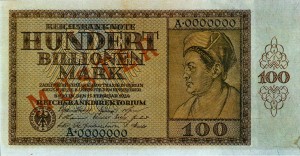The rial has lost almost half its value since the end of 2017, and keeps falling.
 Isfahan, June 27 – Protesters gathered across the Islamic Republic today amid worsening financial and economic woes, and demanded that the country’s leadership address the plummeting currency by mandating payment of wages in the comparatively stable monetary units of pre-Nazi interwar Germany.
Isfahan, June 27 – Protesters gathered across the Islamic Republic today amid worsening financial and economic woes, and demanded that the country’s leadership address the plummeting currency by mandating payment of wages in the comparatively stable monetary units of pre-Nazi interwar Germany.
Thousands of Iranians attended a march toward the Majlis parliamentary building in Tehran, as well as in cities around the country, and were met by paramilitary units that attempted to disperse them with tear gas. The crowds, standing firm, called on the Ayatollahs who run Iran to stop focusing on foreign adventures in Morocco, Yemen, Iraq, Lebanon, Syria, and elsewhere, and instead take care of the people at home, first and foremost by taking steps to salvage some of the population’s spending power as the rial continues to drop in value, perhaps by replacing the rial with early 1920’s German marks.
“Mullahs, mullahs, listen, hark – drop the rial, use the mark,” some chanted. “To save the rial you’re not able, Weimar’s mark was much more stable,” yelled others. The crowds called on the police to join them instead of suppressing the protest.
Iran’s currency has plunged in value over the last several months in reaction to economic sanctions reimposed by the administration of Donald Trump over Tehran’s continued pursuit of nuclear weapons and its meddling in the affairs of numerous countries in the region. The crisis has worsened as thousands of foreign companies have ceased their operations in Iran lest continuing to do business with the Islamic Republic subject them to the loss of far more lucrative contracts with entities in the US. While the government continues to insist people and businesses adhere to the official exchange rate with foreign currencies, the official rate does not reflect consumers’ and traders’ panic, nor the true value of the rial, which has lost almost half its value since the end of 2017 and keeps falling.
Observers note both parallels and differences between Iran’s current currency woes and those of early Weimar Germany. Weimar brought its devaluation upon itself by printing gargantuan quantities of currency to trade for gold with which to pay WWI reparations. This move caused a severe weakening of the German mark, which necessitated printing ever-larger amounts to trade for gold, which led to skyrocketing prices, hoarding, and the eventual worthlessness of the currency. Iran’s situation, by contrast, arises from more indirect outcomes of government behavior: Tehran’s insistence on defiance of US pressure to abandon its pursuit of nuclear weapons, coupled with its prioritization of expanding the country’s regional and global influence over the material welfare of its citizens. In the case of Weimar, the crisis dissipated when France and Belgium occupied part of Germany to appropriate the value of remaining reparations in coal, but the instability formed part of the economic and political picture that proved fertile ground for Nazism. In Iran, the government already adheres to most aspects of Nazi fascism.
Please support our work through Patreon.



